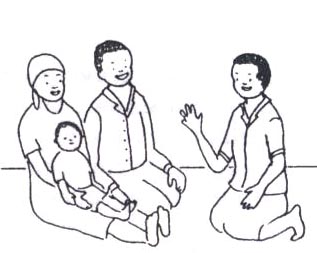 |
We are aiming to improve communication
between the parents and the child. The parents know their child best and
are with the child 24 hours a day. They are the main people who communicate
with the child. it is vitally important, then that professionals work together
with the parents in trying to improve communication.
|
| Here are some basic guidelines to keep in mind while communicating with a child with special needs....... | |
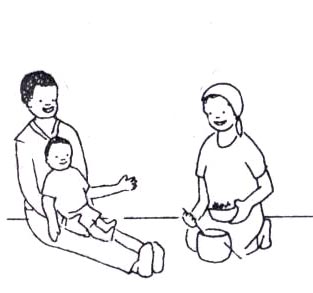 |
Every child needs something to communicate about. It is up to us to
create opprotunities for a child to communicate, rather than giving him
everything he needs without even having to ask.
Mother : We must wait for him to show us whether he wants food. |
 |
Always talk to the child about what you are doing with her or about
what is happening around her.
Mother : look the sun is shinning!! lets go out and play with the ball |
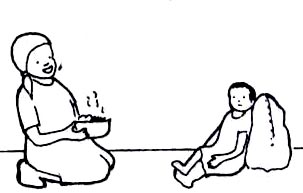 |
Be patient- give the child time to respond to any stimulus.
Mother : Do you want some food? |
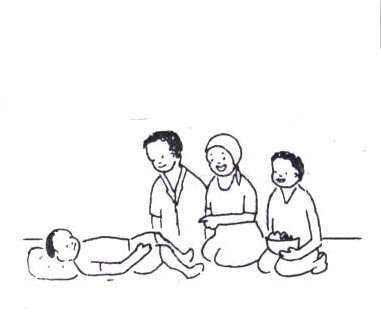 |
Often, the ways in which a multiply disabled child communicates are
not familiar to us and we might not recognise them as being attempts at
comunication. For this reason it is up to us to watch the child closely
and to notice any attempts he might be making to communicate.
Mother : look! he's moving his arm!
|
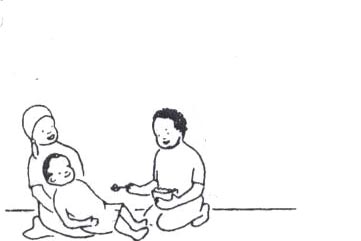 |
The importance of responding to a child's attempts of communication
cannot be stressed enough.
We must respond immediately, appropriately and consistently to all their attempts. Mother : she moved
her hand when she saw the food.
|
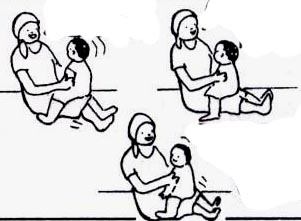 |
When you are playing with the child, do something to her then wait
for a while to see if she will show you in any way that she wants you to
do that thing again. When she gives a sign, do the action again, then wait
again, Continue.
Mother : up and down! up and down!
|
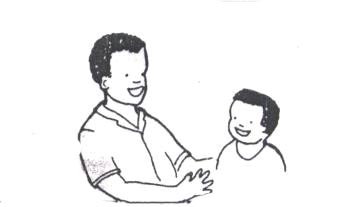 |
Whenever you talk to the child, use an interesting voice - make
your voice go high and low, loud and quiet so that she will want to listen
to it.
Father : Oooh! you look pretty today! Good girl! |
 |
To encourage the child to look at you when you speak, use intersting facial expressions, that are more likely to attract his attention. |
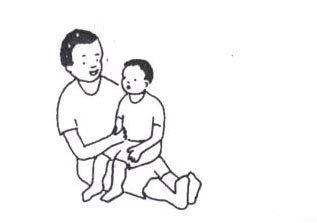 |
For all communication, position yourself close to the child so that he knows you are there and that your are communicating with him |
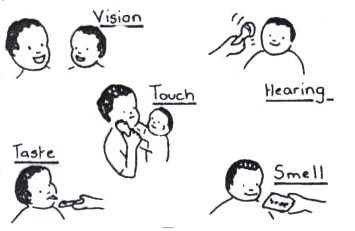 |
Establishing a routine of the daily events that happen in the child's life, can help her to have more understanding of when and why things happen to her. This will also help her to anticipate or predict daily events. |
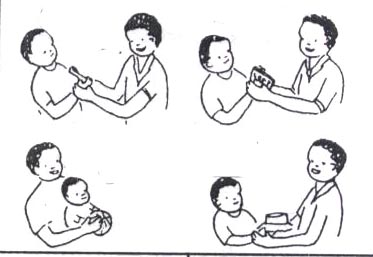 |
Another way of increasing a child's understaning of what is happening
to her is by always giving her a particular object as a sign of a particular
event.For example, before eating, let the child feel a spoon; before
bathing, let her feel the soap; before playing, let her feel a ball.
Father : Here is the spoon! its time
to eat!
|
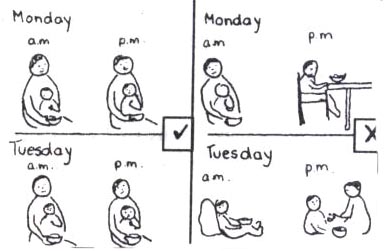 |
A multiply disabled child needs to having thing repeated often and in the same way. repetition and consistency will help her to learn, so when we bath her, we must always bath her in the same way; when we feed her we must always feed her in the same way, and so on. |
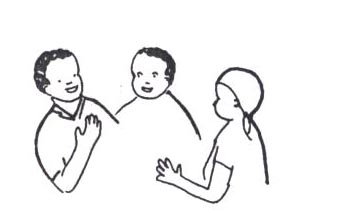 |
Share your knowledge about your child's communication with your family and friends so that everyone treats him and responds to him in the same way. No-one should be forcing him to speak!. |